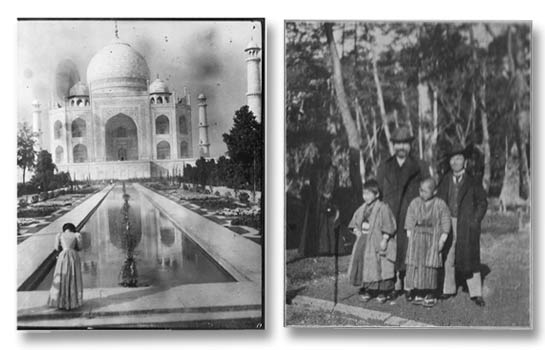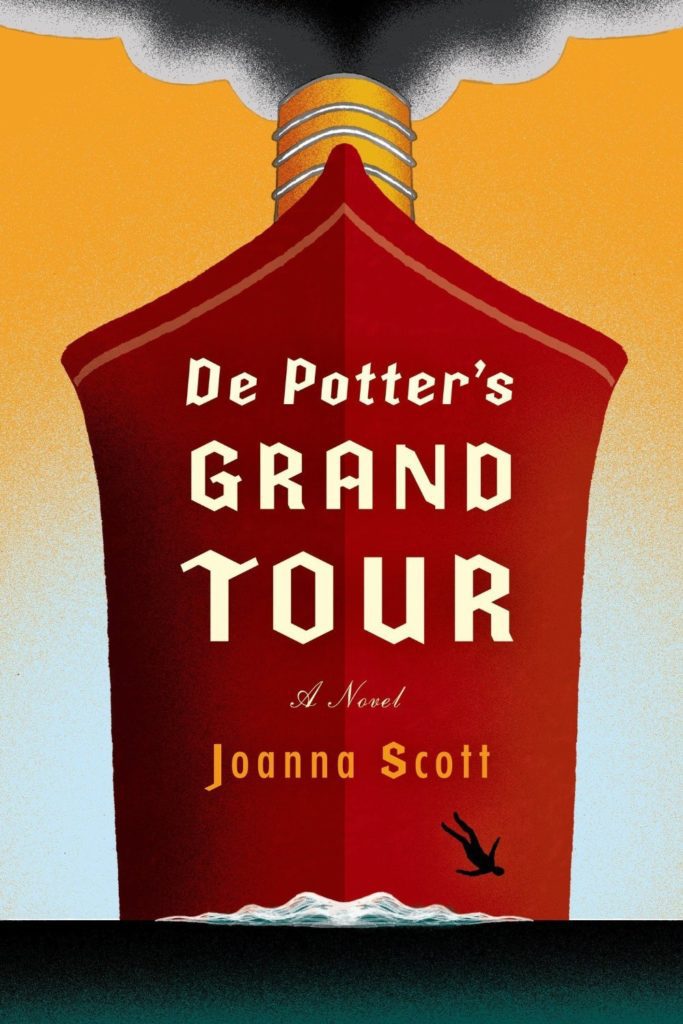The sun had not yet set on the Gilded Age when Armand De Potter disappeared. In 1905, Europe was still, officially, at peace and the best families still considered a grand tour part of every civilised life. De Potter set up a thriving tour company. Relying on his amateur historical knowledge to provide unique itineraries, he also bought curios and antiquities along the way. He was a collector — of things, memories, histories, experiences.
So far, all of this is true.
As is the part where De Potter disappears without a trace. He never disembarks from the ship he was traveling on. His body is never found.
What happened to him that night, and in all the in-between moments of his life are filled in by the author, Joanna Scott. Scott happens to be De Potter’s great granddaughter. When she accidentally discovered a steamer trunk full of papers and photographs, she decided to reconstruct the life of her great grandfather.
I asked her a few questions about the process.
How did you begin to piece together the “real” Armand?
Early on in the process, I was absorbed by the detective work involved in trying to solve a family mystery that was over a century old. But by casting the story as a novel, I am ultimately asserting that it is not meant to provide historical truth. I don’t think I would have been able to construct Armand in any form if I hadn’t been free to invent a fictional version of him. My hope is that my characters exist independently from their real-life counterparts, in the same way that painted figures on a canvas can be appreciated independently from their models.
Was it difficult to set aside familial sympathy or a desire to defend Armand?
I make an effort to approach all my fictional creations with sympathy, regardless of their failings. I felt intense sympathy for Armand as I was imagining his predicaments. He may come across as a poseur, but I don’t mean to suggest that he is blind to his own affectations. He is painfully self-critical, as I conceived him. I probably am telling too much about myself when I admit that I see some of my own shortcomings in him (maybe saying this reveals the “familial” part that I was unable to set aside). But I am not inclined to defend characters–I present them, setting them in motion.

At what point do the novel and the history diverge? Does the book represent what you think happened?
As much as I steeped myself in relevant information and was intensely absorbed by research, my aim was to separate the novel from history with the very first sentence. I was striving to offer a response to the reality of the past, always with the intention of giving the story its own internal logic.
Did you retrace any of the De Potter tours?
This was part of the fun of writing the book! Think of history sitting there to be studied, in the same way that Gertrude Stein sat for Picasso. In order to know as much as I could about my subject, I had to travel across the sea from Marseille to Istanbul, wander the streets of Piraeus and Athens, and dig through museum archives. I wanted to see my subject intimately, in order to be able to treat it imaginatively and with confidence.
What can you suggest for anyone else wanting to find out more about an interesting family member?
I’d suggest to start by looking in the backs of closets and the dark corners of attics and basements. If you happen to have an old steamer trunk lying around, don’t do what I did and let it sit unopened for years. I’ll add that good access to various databases is helpful, now that the most arcane documents are turning up in online archives.
**
The book manages to evoke a sense of classicism appropriate to the era and setting. At the same time it brings a modern introspection.
From this initial meeting, they struck up such an easy friendship that the rug merchant assumed they were brothers. Armand kept Bougault company while he designed the scenes for his photograph; Bougault helped Armand sharpen his sense of purpose in his life. he came to think of the arid landscape as a place exempt from modern corruption — the version of the desert as illustrated in Bougault’s photography was the true version, and the reality visible without the camera’s aid was just a lie. ~Pg 59
Scott recreates scenes all over the world, vivid and colorful. The reader is quickly swept along to exotic locations, damp steamer decks and musty museum storage rooms. All the while we are led by a mysterious Armand De Potter, just as clients more than a century were.
Many thanks to Picador for the review copy.
And kind thanks to author Joanna Scott for answering a few questions.
Paperback: 272 pages
Publisher: Picador (October 13, 2015)
Language: English
ISBN-10: 1250074746
ISBN-13: 978-1250074744
Product Dimensions: 5 x 0.7 x 8 inches

